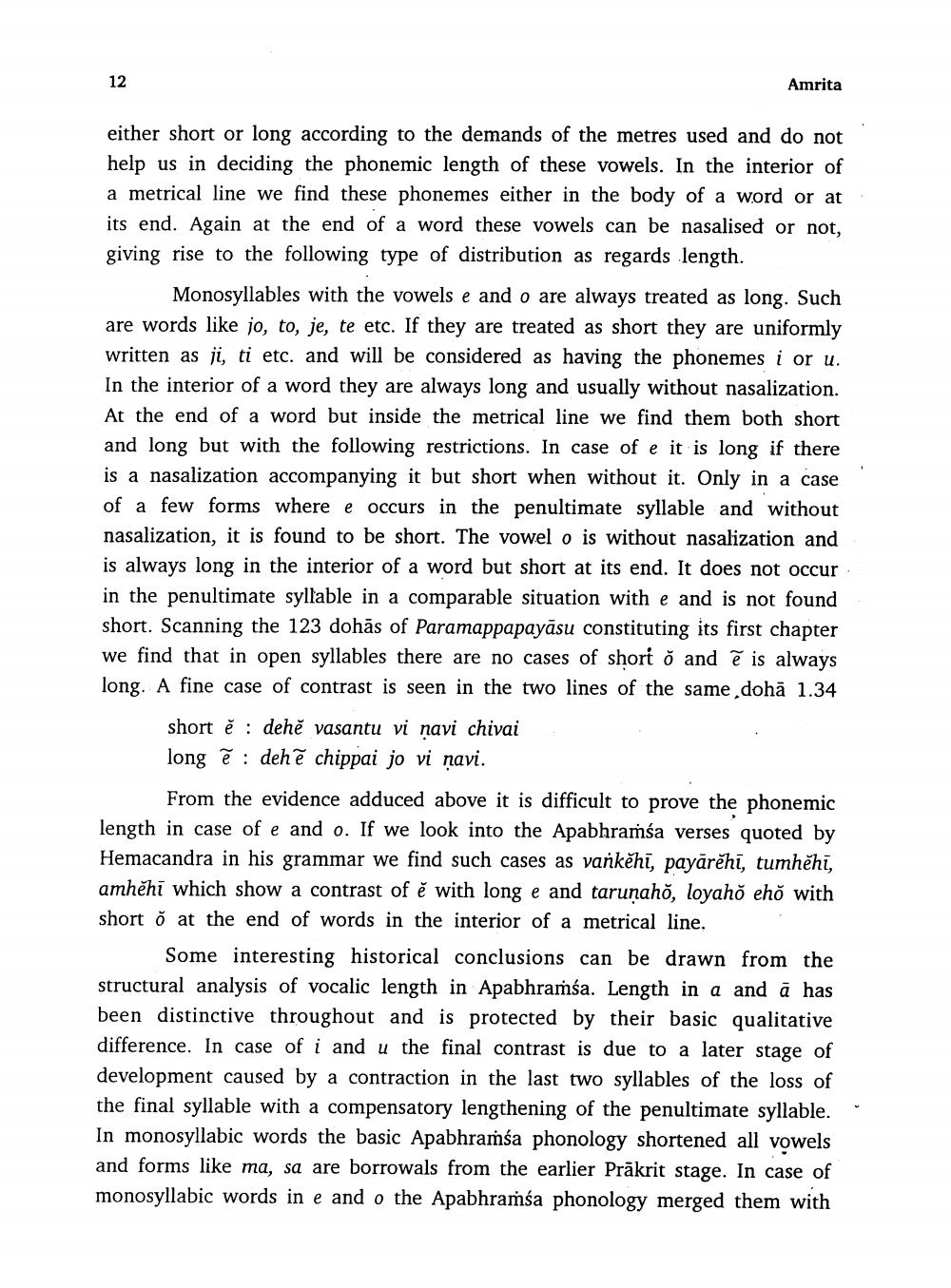________________
12
Amrita
either short or long according to the demands of the metres used and do not help us in deciding the phonemic length of these vowels. In the interior of a metrical line we find these phonemes either in the body of a word or at its end. Again at the end of a word these vowels can be nasalised or not, giving rise to the following type of distribution as regards length.
Monosyllables with the vowels e and o are always treated as long. Such are words like jo, to, je, te etc. If they are treated as short they are uniformly written as ji, ti etc. and will be considered as having the phonemes i or u. In the interior of a word they are always long and usually without nasalization. At the end of a word but inside the metrical line we find them both short and long but with the following restrictions. In case of e it is long if there is a nasalization accompanying it but short when without it. Only in a case of a few forms where e occurs in the penultimate syllable and without nasalization, it is found to be short. The vowel o is without nasalization and is always long in the interior of a word but short at its end. It does not occur in the penultimate syllable in a comparable situation with e and is not found short. Scanning the 123 dohās of Paramappapayāsu constituting its first chapter we find that in open syllables there are no cases of short ő and ē is always long. A fine case of contrast is seen in the two lines of the same dohā 1.34
short ě : dehě vasantu vi navi chivai long ē : dehẽ chippai jo vi ņavi.
From the evidence adduced above it is difficult to prove the phonemic length in case of e and o. If we look into the Apabhramśa verses quoted by Hemacandra in his grammar we find such cases as vankehi, payārēhi, tumhēhi, amhèhi which show a contrast of — with long e and tarunahỏ, loyahð ehỏ with short o at the end of words in the interior of a metrical line.
Some interesting historical conclusions can be drawn from the structural analysis of vocalic length in Apabhramśa. Length in a and a has been distinctive throughout and is protected by their basic qualitative difference. In case of i and u the final contrast is due to a later stage of development caused by a contraction in the last two syllables of the loss of the final syllable with a compensatory lengthening of the penultimate syllable." In monosyllabic words the basic Apabhramśa phonology shortened all vowels and forms like ma, sa are borrowals from the earlier Prākrit stage. In case of monosyllabic words in e and o the Apabhraṁsa phonology merged them with




